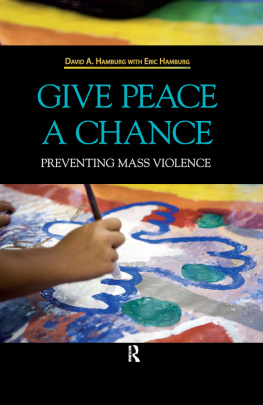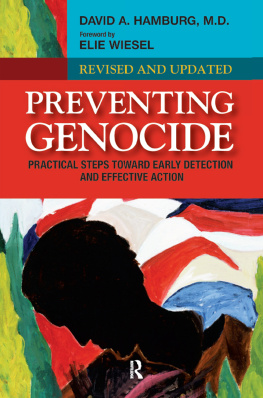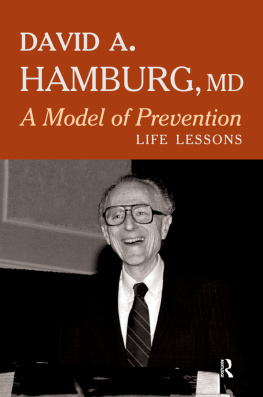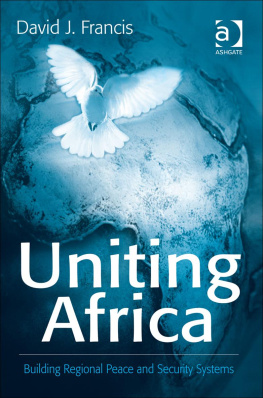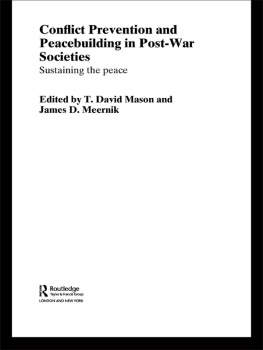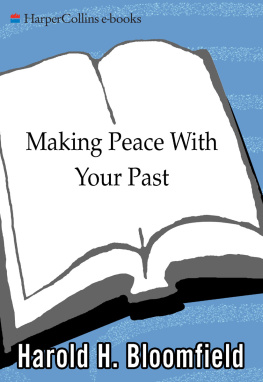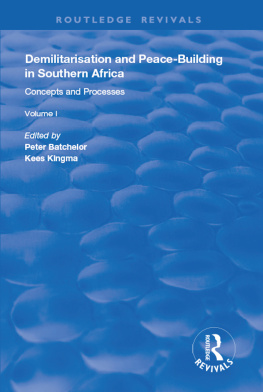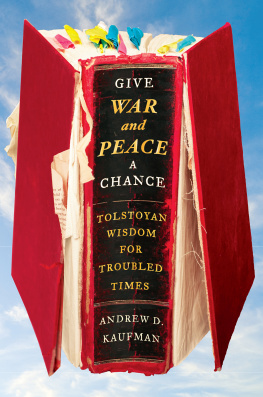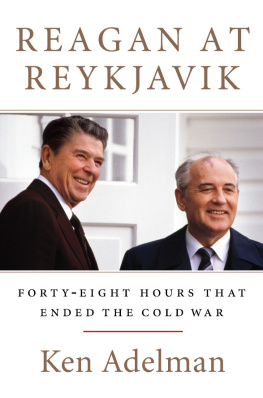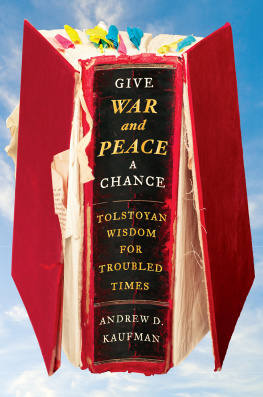First published 2013 by Paradigm Publishers
Published 2016 by Routledge
2 Park Square, Milton Park, Abingdon, Oxon OX14 4RN
711 Third Avenue, New York, NY 10017, USA
Routledge is an imprint of the Taylor & Francis Group, an informa business
Copyright 2013, Taylor & Francis.
All rights reserved. No part of this book may be reprinted or reproduced or utilised in any form or by any electronic, mechanical, or other means, now known or hereafter invented, including photocopying and recording, or in any information storage or retrieval system, without permission in writing from the publishers.
Notice:
Product or corporate names may be trademarks or registered trademarks, and are used only for identification and explanation without intent to infringe.
Library of Congress Cataloging-in-Publication Data
Hamburg, David A., 1925
Give peace a chance : preventing mass violence / David A. Hamburg with Eric Hamburg.
p. cm.
Includes bibliographical references and index.
ISBN 978-1-61205-138-3 (hbk.: alk. paper)
1. ViolencePrevention. 2. Peace. I. Hamburg, Eric. II. Title.
HM1116.H35 2012
303.6'6dc23
2012030400
ISBN 13: 978-1-61205-138-3 (hbk)
ISBN 13: 978-1-61205-139-0 (pbk)

This book was written under difficult circumstances: family illness; serious injuries; the necessity to move to Washington, DC, after nearly three decades in New York. Furthermore, the intellectual task was intrinsically difficult in seeking to synthesize decades of experience with exceedingly difficult, tragic, horrifying experiences: different varieties of war and mass atrocities including genocide. Would it be possible to formulate principles that cut across the major forms of mass violence and could lead to useful insights, wise policies, and institutional innovations? Could one draw on the intellectual, technical, and moral resources of the scientific and scholarly community, the best of the policy community, and personal experiences with violence at different levels of organization and in different parts of the world? The importance of this subject matter, and my unusual range of opportunities, made it a compelling necessity to try to answer these questions to the extent possible.
It would have been impossible to pursue this analysis and write this book without the deeply significant, enduring help and love of a very close family. My wife, Betty, a distinguished scholar, practitioner, and leader in child health, has been for sixty years a bulwark in personal and professional life. Her own remarkable contributions in adolescent health and development have recently been summarized and are currently in press. Her persistent support and adaptation to my adventures, such as the African hostage crisis, have made an immense difference in all of my work.
Our first offspring, Eric, though living across the country in Los Angeles to raise his extraordinary son (also David), has been deeply immersed with me in all aspects of my efforts to understand and prevent deadly conflict. He has played a major, highly constructive role in the work that made this book possible. He made an important documentary on preventing genocide. He is a lawyer; a distinguished filmmaker; and above all a humane, compassionate, democratic person.
Our second offspring, Peggy, has not only been highly supportive but has created a distinguished career in medicine and public health, most recently as a highly innovative, farsighted leader of the US Food and Drug Administration, an immense, complex, worldwide operation. In the face of these heavy demands, and raising two wonderful children, Rachel (now at Yale) and Evan (now in his final year of high school), she and her brilliant husband, Peter Brown, have created a lovely apartment for us in their beautiful home and made arrangements with great ingenuity and generosity to cope with the health issues and pursue the work of this book. Peggys work, based first in New York and then in Washington, has had truly worldwide significance. She is a thoroughly good human being whose personal attributes contribute to her professional advances for the benefit of our shared humanity.
Jack Barchas, a great leader in medicine, chair of a unique department of psychiatry at Weill Cornell Medical College, has for a dozen years provided the professional conditions necessary for pursuing work on prevention of mass violence. His intellectual stimulation, personal encouragement, and institutional ingenuity have made a crucial difference and continue to the present day.
In the Department of Psychiatry at Cornell, the atmosphere was very positive and helpful. Two people who did a great deal of work on and around the book are Linda Newman and Emily Benedetto. I am exceedingly grateful to them. Moreover, this department, with my help, generated the unique Pritzker Consortium on the biology of mental illness.
Jack Rowe, a pioneer in geriatrics, health policy, and leadership of health institutions, has been helpful in many ways over many years, not least in facilitating this book. He has been an authentic leader on the medical scene, with special contributions at Harvard, Mount Sinai, Aetna, Columbia, and the MacArthur Foundation.
Two people have made an extraordinary contribution by having the patience to work closely with me at the Institute of Medicine, National Academy of Sciences; at Harvard; and for many years at Carnegie: Elena Nightingale and Susan Smith Santini. Their ability, dedication, and loyalty are off any scale I know.
Several organizations were extremely helpful in most or all of the sweep of work over the years on preventing mass violence. The Foreign Policy Association, headed by a person of rare vision, Noel Lateef, recognized our work on prevention when it was in its infancy, clarified its significance for the world, and provided platforms for its advancement.
A collaborative family: David, Betty, Eric, and the second David Hamburg.
Other organizations were also helpful. The Council on Foreign Relations, especially its Center for Preventive Action, has made a positive difference in the field. I am pleased to have had the opportunity to help establish this center and foster its work for some years.
Several major universities have given intellectual stimulation and cooperative efforts of the highest quality: Stanford, Harvard, and Rockefeller University. So too have the New York Academy of Medicine and the remarkable Mount Sinai Medical Center.

